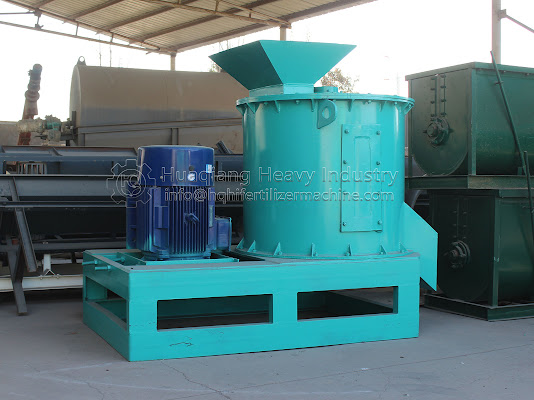Granulation factors affecting fertilizer manufacturing
At present, due to the problems of fertilizer manufacturing process and operation technology, the output of granulator in many fertilizer plants can not meet the expected design requirements, and the surface of fertilizer particles is not smooth, the hardness is low, it is easy to break, and the powder content is high.
2. Material size. Fine particle size, large specific surface area, fast steam absorption, favorable for water regulation, high granulation output. However, if the particle size is too small, the particle will be brittle, which will affect the particle quality; if the particle size is too large, it will increase the wear of the die and the press roll, increase the energy consumption, and reduce the output. The general particle size shall pass the 3mm sieve, and the chicken material shall pass the 3.5mm sieve, of which at least 80% shall pass the 1.18mm sieve.
3. Material moisture. If the moisture content of the material is too high, it will reduce the amount of steam added during granulation and affect the increase of granulation temperature, thus affecting the output and quality of pellet feed. At the same time, the moisture content of the material is too high, it is difficult to adjust and quality, and it is easy to cause the material to slip between the inner wall of the ring mold and the pressing roller, which results in the blocking of the ring mold hole. It is generally required that the moisture content of the material should be below 13% before tempering.
The NPK fertilizer production line uses raw materials that are not easily agglomerated. For example, trace element foliar fertilizers use iron, copper, manganese, zinc, sulfate and boric acid, ammonium molybdate as raw materials, and the additives are mainly magnesium sulfate. The main material is dry, and when the air is not too humid, the fertilizer produced is Not very agglomerated, fertilizers with humic acid as the main raw material and fertilizers with amino acid as the main raw material are not easy to agglomerate. In addition, choose materials as dry as possible.
Factors affecting the processing yield of fertilizer granulator machine
1. Material volume. Generally speaking, the larger the volume and mass of the material, the higher the pelletizing output. Therefore, when selecting the raw materials, the formulators should consider not only the batching needs, but also the bulk density of the material.2. Material size. Fine particle size, large specific surface area, fast steam absorption, favorable for water regulation, high granulation output. However, if the particle size is too small, the particle will be brittle, which will affect the particle quality; if the particle size is too large, it will increase the wear of the die and the press roll, increase the energy consumption, and reduce the output. The general particle size shall pass the 3mm sieve, and the chicken material shall pass the 3.5mm sieve, of which at least 80% shall pass the 1.18mm sieve.
3. Material moisture. If the moisture content of the material is too high, it will reduce the amount of steam added during granulation and affect the increase of granulation temperature, thus affecting the output and quality of pellet feed. At the same time, the moisture content of the material is too high, it is difficult to adjust and quality, and it is easy to cause the material to slip between the inner wall of the ring mold and the pressing roller, which results in the blocking of the ring mold hole. It is generally required that the moisture content of the material should be below 13% before tempering.
NPK compound fertilizer granulation
In addition, when processing NPK compound fertilizer, fertilizer caking factor should be considered. Fertilizer caking mainly occurs in the process of processing, transportation, storage and transportation of fertilizer. It is mainly caused by moisture absorption of micro fertilizer grains, evaporation of surface dissolution (deliquescence) and recrystallization. In this process, crystal bridges are formed, resulting in small particles turning into large particles and caking.The NPK fertilizer production line uses raw materials that are not easily agglomerated. For example, trace element foliar fertilizers use iron, copper, manganese, zinc, sulfate and boric acid, ammonium molybdate as raw materials, and the additives are mainly magnesium sulfate. The main material is dry, and when the air is not too humid, the fertilizer produced is Not very agglomerated, fertilizers with humic acid as the main raw material and fertilizers with amino acid as the main raw material are not easy to agglomerate. In addition, choose materials as dry as possible.




Comments
Post a Comment